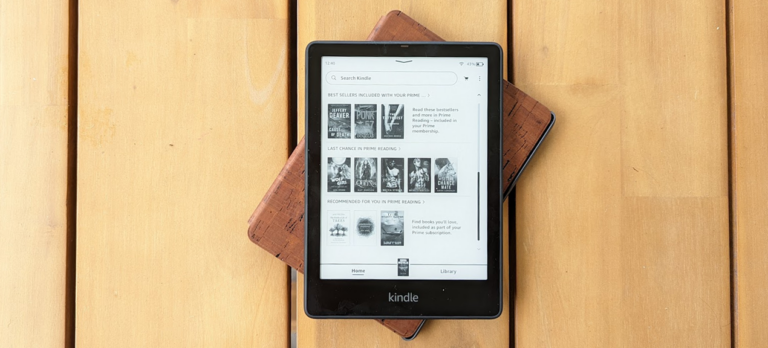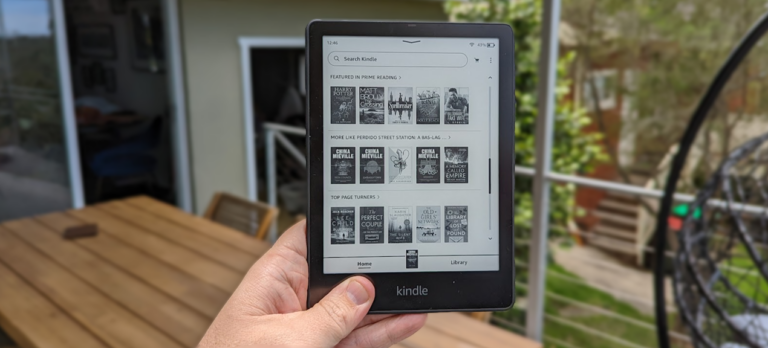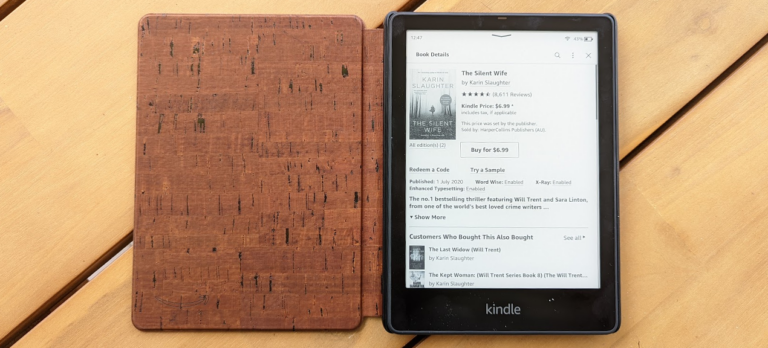So bright it's gotta' wear shades.
Amazon Kindle Paperwhite (11th Gen) review

What's new in the Paperwhite 11th gen?
The Paperwhite has been the middle-ground Kindle for several years now; not as cheap and no-frills as the basic Kindle, and not as lux or pricey as the Kindle Oasis. The 11th generation Paperwhite is a decent step forward versus last year’s release, edging closer to the Oasis in features, with a small nudge forward in price too. On the balance, it's certainly enough to earn a spot in our list of best ereaders in Australia.
There are several noticeable improvements over the Paperwhite we reviewed earlier in the year. While the new model has the same sharp 300dpi resolution, it now has a larger, squarer 6.8-inch display. Of course, it needs to be a slightly larger device to accommodate the larger screen, but it is still a very comfortable size and weight to hold for long reading sessions.
The backlight behind the screen receives a significant upgrade too, with 17 individual LED lights, up from just 5 on the 10th gen. model. Amazon uses the extra lamps to power adjustable warm light settings, giving you a much larger range of light colours and brightness. You can also use a new auto-adjusting brightness sensor to find the best level of brightness for the room you’re in.

How does it compare to other Kindles?
These changes move the Paperwhite models much closer to the Kindle Oasis and further from the base Kindle model. The price inches up the scale too, with the Paperwhite priced at $239, and the Signature Edition at $289. Still, the Oasis costs a mighty $399, and though it has a few extra features, it’s harder to make a case for spending the extra when the Paperwhites have so many features in common with it.
There’s also a few decent steps forward in the power department. Amazon now estimates that the Paperwhite will last up to 10 weeks rather than 6 weeks, when you turn off WiFi and read for 30 minutes per day. Amazon has finally swapped out the old style micro USB charging port for the newer, and more ubiquitous USC-type, so most people using an Android smartphone will find they can share the same charging at the bedside.
If you splash out on the Paperwhite Signature Edition, you also get the added benefit of built-in wireless charging, too. Again, this uses the same charging protocol that most phones do (including Apple iPhones) so you can buy one charger and use it for a number of different devices, including your Kindle. This feature is unique to the Signature Edition; even the Kindle Oasis lacks this extra convenience (for now).

Things to read (and the lack thereof)
One area that has seen no change is in Kindle’s incompatibility with standard ebook formats, and it’s ongoing reliance on the Kindle Store for content. Of course, it’s not surprising that Amazon would want to keep Kindle customers shopping for books in its store, but it limits your ability to access books from other sources, notably from public libraries that have ebooks in their collections.
As we’ve said before, and we’ll probably say with every new Kindle release for the foreseeable future, this is a bummer.
On the flipside, you can access Amazon’s various ebook subscription options. Amazon Prime customers automatically have access to Prime Reading, which has a rotating collection of over 1,000 books to choose from. Dedicated bookworms can also sign up to Kindle Unlimited which has many, many more books to choose from, but will set you back about $13 per month.
All in all, this is a very solid new Kindle. There’s a number of decent steps forward, and only a small increase in price. Owners of older Kindles will feel the speedier processor straight away and appreciate the sharper panel you get on newer Paperwhites.
Related Articles







